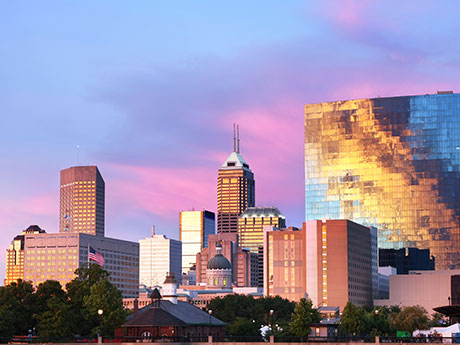By Traci Kapsalis, JLL
It’s no secret that the COVID-19 pandemic turned every office market across the globe upside down. In the process, quality of life, health and well-being have become top priorities for office workers, as well as a push for hybrid and flexible working models.
To understand and support these evolving expectations, local governments, employers and landlords are working together to identify and shape their new future of work.
In fact, new research from JLL reports that the next three years will be a critical phase for commercial real estate strategy, representing a crucial window of opportunity that will determine how successful companies (and cities) will be in adapting to rapid changes.
At the crossroads of America, the Indianapolis market is well on its way to a reimagined office environment. Here are three demonstrable signs.
1. Flight to quality dominates the office market
Leasing activity for Class A office properties is strong in Indianapolis. According to a recent report, activity in this sector is reaching new heights as it achieved 248,000 square feet of occupancy growth in the second quarter — the highest in a single quarter in over four years — and hit record-high rents of almost $25 per square foot.
This can be seen as a direct correlation to the rising importance of a workplace that promotes company culture and in-person collaboration. Unique and enticing amenities play a major role in encouraging employees to spend more time in the office and Indy tenants are looking for ways to partner with landlords to increase these experiences for their employees. High-quality amenities are more prominent in Class A properties, which is why local office parks with live-work-play environments, such as Bottleworks, have the lowest vacancy rates and have seen the most growth over pre-pandemic conditions.
The most significant indicator of flight to quality’s impact on the Indianapolis office market is its recent rebound in overall net absorption from -257,000 square feet in the first quarter to 106,000 square feet in the second quarter — thanks to healthier Class A activity.
2. Strong preleasing activity reflects the demand for new development
Forward-thinking business leaders understand the value of new, amenitized space, even if it means paying a bit more per square foot for a smaller footprint. According to a Future of Work report, 77 percent of business owners agree that investing in quality office space is a greater priority than expanding their total footprint.
As a result, demand for new development in Indianapolis is abundant although supply remains low. Consequentially, preleasing continues for projects currently under construction or about to break ground, setting the Class A sector up for future growth.
Downtown Indianapolis’ Bottleworks District, which sits at the east end of Mass Avenue, is a prime example of this trend. This “new kind of neighborhood-based construction” is already 91 percent preleased with completion for its two phases not projected until 2024 and 2025.
Other projects like Agora, a newer mixed-use development announced in the Indianapolis suburb of Carmel, have also seen preleasing success. This four-story building, which offers 100,000 square feet of Class A office and first-floor restaurant space, third- and fourth-floor balconies, an onsite fitness center and access to underground parking with direct building access, was 74 percent preleased by completion and currently sits at full occupancy.
As demand for amenity-rich offices grows, so will the city’s speculative construction pipeline.
3. Steadfast adaptation of return to work
As of June 2022, global office occupancy levels were reported as approximately 40 percent of their “normal” levels in 2019. In Indianapolis, locally led companies specifically are seeing higher occupancy of employees returning to the office and are capitalizing on it with decisions to upgrade their workplace.
What’s driving this return? Outside of the aforementioned Class A, amenitized spaces, the size and steady nature of Indianapolis’ office market can be attributed to the staunch return of employees to their physical workplace.
Going back to work in Indianapolis is much more straightforward compared with its national counterparts. The average commute time is 20 to 30 minutes in town rendering “commute-worthy” offices less applicable. The majority of employees do not rely on public transportation in Indianapolis, limiting mass health concerns significantly.
And the city’s office buildings are more spaced out in office parks and feature fewer floors (and shorter, smaller elevator rides) than major cities, leaving fewer opportunities for the spread of germs.
Looking ahead, employers will need to continue evaluating their workplace strategy to realize long-term workforce and workplace priorities, especially with employee demand for flexibility here to stay. As a result, some local corporate downsizing will continue to challenge the supply and demand ratio.
Nonetheless, the strength of the city’s Class A market, development pipeline and motivated workforce suggest a positive future for Indy’s office market.
Traci Kapsalis is an executive vice president with JLL. This article originally appeared in the October 2022 issue of Heartland Real Estate Business magazine.



